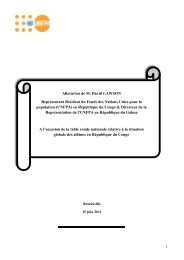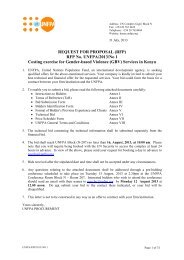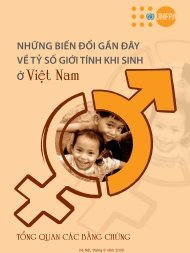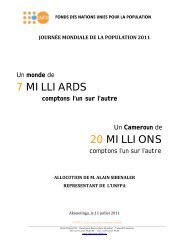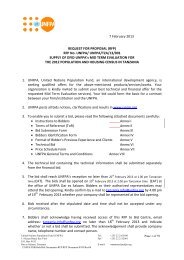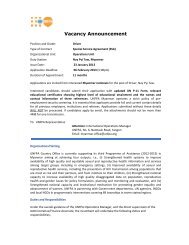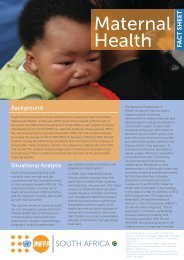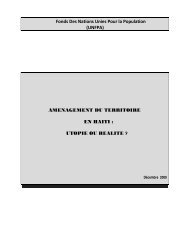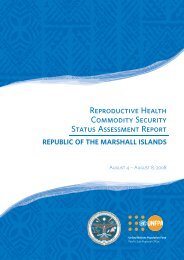MYANMAR
MYANMAR
MYANMAR
You also want an ePaper? Increase the reach of your titles
YUMPU automatically turns print PDFs into web optimized ePapers that Google loves.
24<br />
ifi. The Operational Aspects of Population and Family Planning Programme<br />
Implementation<br />
A. Political and National Support<br />
69. The government realizes the importance of population programmes in achieving<br />
progress. It also accepts the fundamental premise that the population, in both its quantitative<br />
and qualitative aspects, must be considered as an integral part of development. In addition, it<br />
sees population aggravates such problems as high mortality and morbidity, pressure on social<br />
services, lack of employment opportunities, high dependency ratios, urban deterioration and<br />
environmental degradation. The National Population Policy was drafted and national<br />
population programme was introduced to regulate population growth. The objectives and<br />
strategies adopted are mentioned in the Current Status of Population Policy.<br />
70. Effective implementation of population programmes have produced favourable<br />
results in social and economic development. The mortality and morbidity patterns by age and<br />
sex have changed. The fertility rates are decreasing. Literacy and educational programmes<br />
for women have reduced women's illiteracy level. Urban population growth andpollution of<br />
air, water and soil is much lower compared to neighbouring countries. Further success can be<br />
expected from the ongoing and additional population programmes in the future.<br />
B. National Implementation Strategy<br />
71. National Population Policy has been implemented through a number of population<br />
strategies. One of the measures, birth spacing programme, was introduced in 1991 in<br />
Myanmar. The programme started in one township in lower region of Myanmar with the<br />
assistance of an NGO, Family Planning International Assistance (FPIA). The programme<br />
was extended to two additional townships in 1993 and it is running well. In 1992, Ministry of<br />
Health introduced a larger birth spacing programme in twenty townships (which is about<br />
1/10 of total country population) in the country by the assistance of UNFPA.<br />
72. A combination of service delivery strategies has been used in Myanmar birth spacing<br />
programmes. After collection of birth spacing information from the community, birth<br />
spacing services were delivered through health centres, clinics, community health workers<br />
and voluntary organizations such as MMCWA and MMA. The Government and NGOs work<br />
together both in data collection, training, implementation and evaluation of service delivery.




